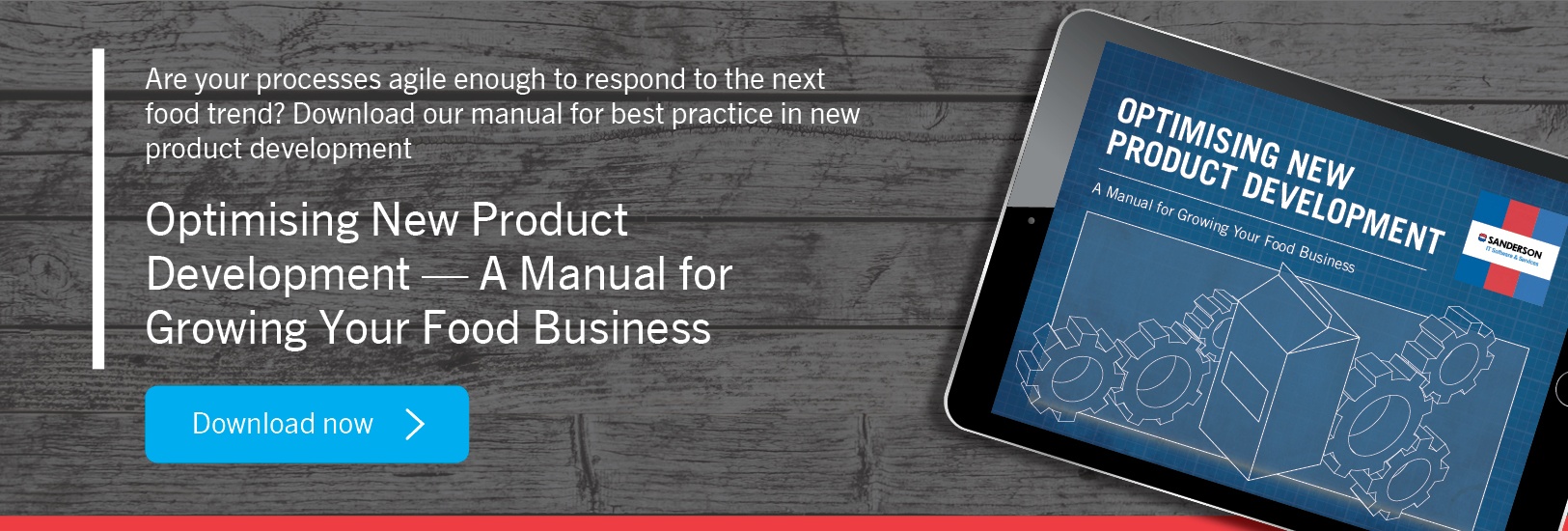The Clean Eating Backlash ‒ Lessons for New Product Development in Agile Food and Drink

The clean eating movement is waning, even among the lifestyle bloggers who promoted it in the first place. But some elements of a fad may well stick, so food businesses need agile processes, supported by food & drink manufacturing ERP software, to meet changing tastes with new products.
“Food is not dirty!” exclaimed the celebrity cook Nigella Lawson in a withering attack on the clean eating movement. There can be no place for extremes in food, Lawson argued, as she landed a blow against the social media bloggers who had been pushing the apparent benefits of unrefined and unprocessed, natural foods.
Now the momentum appears to be shifting back Lawson’s way, highlighting more than ever the pressure on food and drink manufacturers from food habits that are in constant flux. Food makers need agile production processes and joined-up company-wide thinking to keep up with fast-moving consumer trends. Even as some of the most ardent supporters of the “gluten-free, sugar-free, oil-free, legume-free” lifestyle turn their backs on the clean eating movement, elements of the trend will stick.
Take Jordan Younger, who signed up more than 40,000 followers to her five-day cleanse plan only to later realise her #eatclean diet was making her hair fall out. Formerly the Blonde Vegan, she’s now known as the Balanced Blonde.
Another food blogger Ella Mills ‒ better known as Deliciously Ella and author of the UK’s fastest-selling debut cookbook ‒ has also distanced herself from the "clean-eating" label, believing the word clean has become too loaded.
While a softening in approach is welcome, food and drink manufacturers need to remember that social media will inevitably hold on to the parts of the clean eating movement that they liked. This explains the recent popularity of flexitarianism through, for example, meat-free weekdays.
Embracing healthy eating lifestyles
The onus is on food producers to continue to respond to these evolving trends and deliver sensible eating in a way that doesn’t have to be boring or tasteless. The industry is rightly proud of its record in embracing the healthy eating agenda, having helped to reduce the nation’s salt intake by 15%, and all but eliminated artificial trans fats in products. The Food and Drink Federation states that its members have also boosted fibre and other micronutrients and increased fruit and vegetable content.
Recipe reformulations are playing a crucial part in this progress, ensuring that more consumers can go gluten-free or reduce the amount of sugar in their diets. In the case of Swiss food giant Nestlé, scientists have gone as far as to find a way to reduce the sugar content of its chocolate by 40%, but without any taste impact. The proof will be in the eating, and sweet-toothed fans of KitKats and Yorkies shouldn’t have long to wait to put them to the taste test.
Once a trend evolves into a potential sales opportunity, manufacturers have no time to waste in getting their product to the marketplace before their competitors do. Any complacency can quickly result in firms losing market share.

How food & drink manufacturing software solutions can help
This means there’s an absolute requirement for agile production processes and a joined up company-wide approach that will coordinate your technical, production, purchasing and finance departments. The more steps in the chain, and the more manual the communication process, the longer it will take to get products to market. If all elements in the process ‒ people, machines and systems ‒ are connected all of the time, then things will move much more quickly.
Using a specialist food manufacturing ERP software system means the different elements can be automated and implemented simultaneously for optimum efficiency and accuracy. This starts with initial control of new product development and recipe management, before moving through to the scheduling of production and inventory optimisation, sales forecasting and customer management.

Feedback on developing trends
By storing key information on product development in one place, including variances, wastage and costings, it’s easier and quicker to adapt recipes in accordance with evolving customer tastes and trends. And having the right software also means being able to forecast at an early stage how a new product will impact on factory operations, inventories and warehousing.
At the same time, sales and customer management teams need to prepare for product launches or feed back data about developing trends. That’s important when it is increasingly the consumer calling the shots. Using the right specialist food business ERP software will help with these challenges today - as social media and the influence of a growing army of bloggers and lifestyle gurus means the industry is now moving at a much faster pace.
So should you.
Topics: Food & Drink




